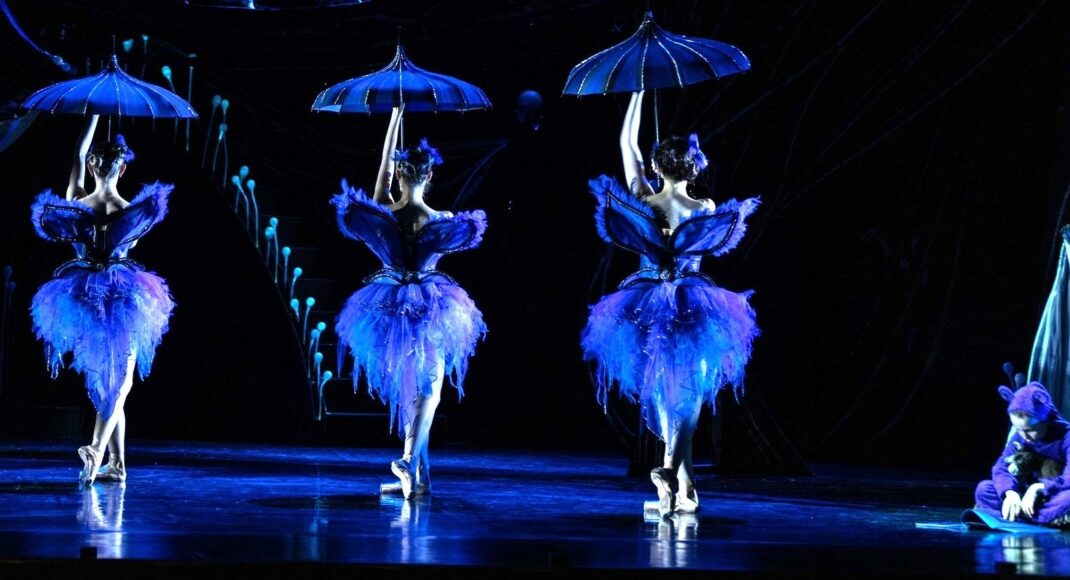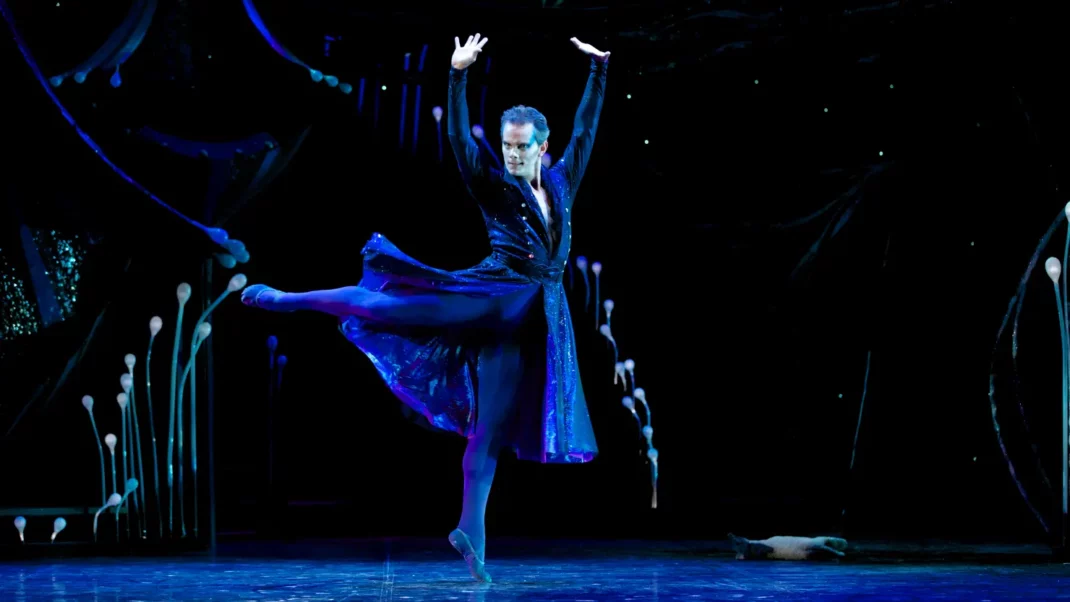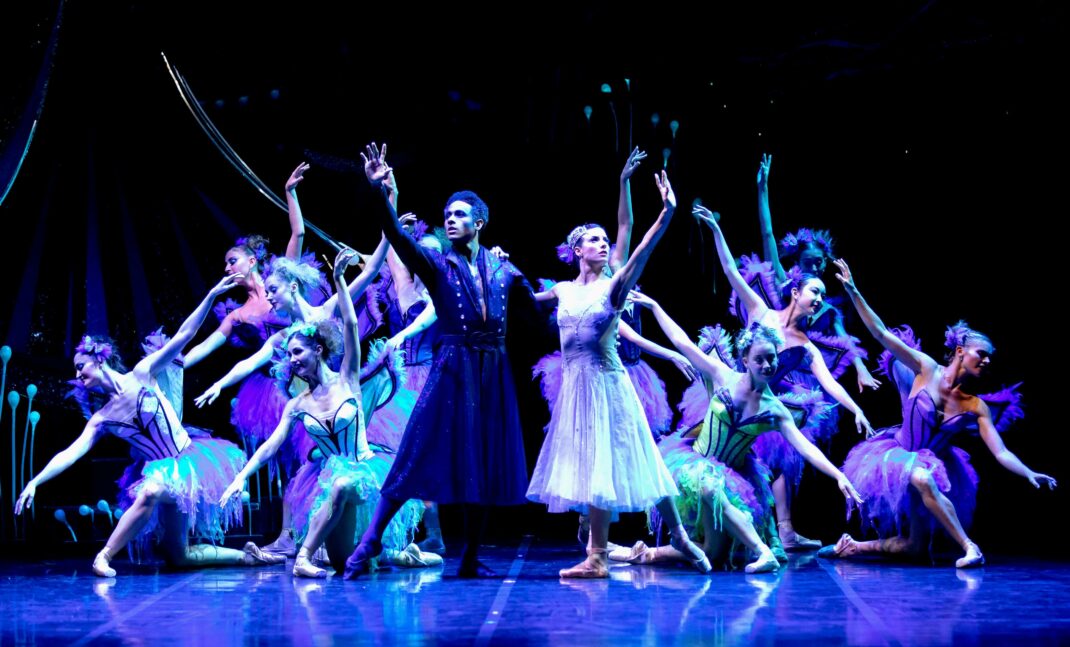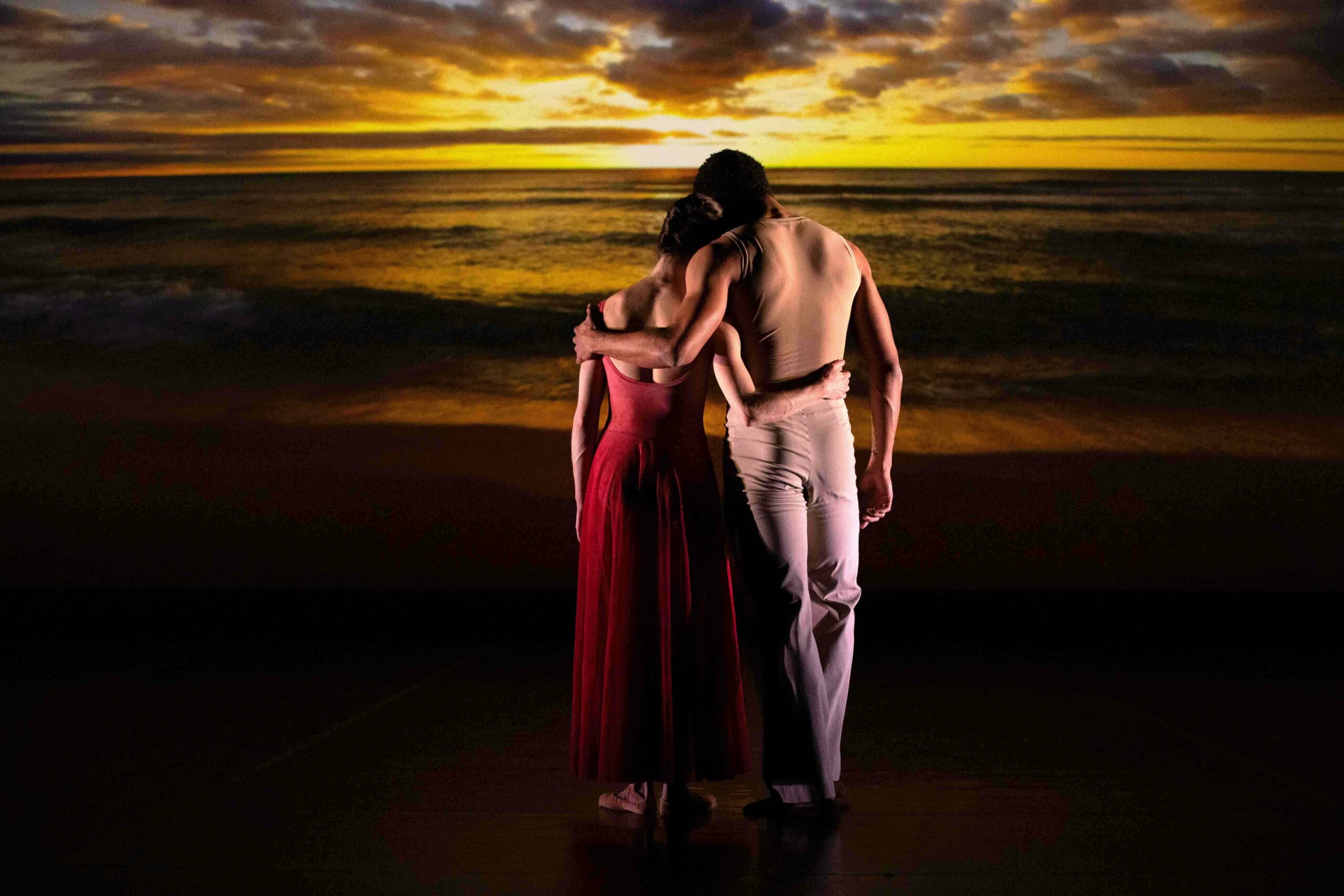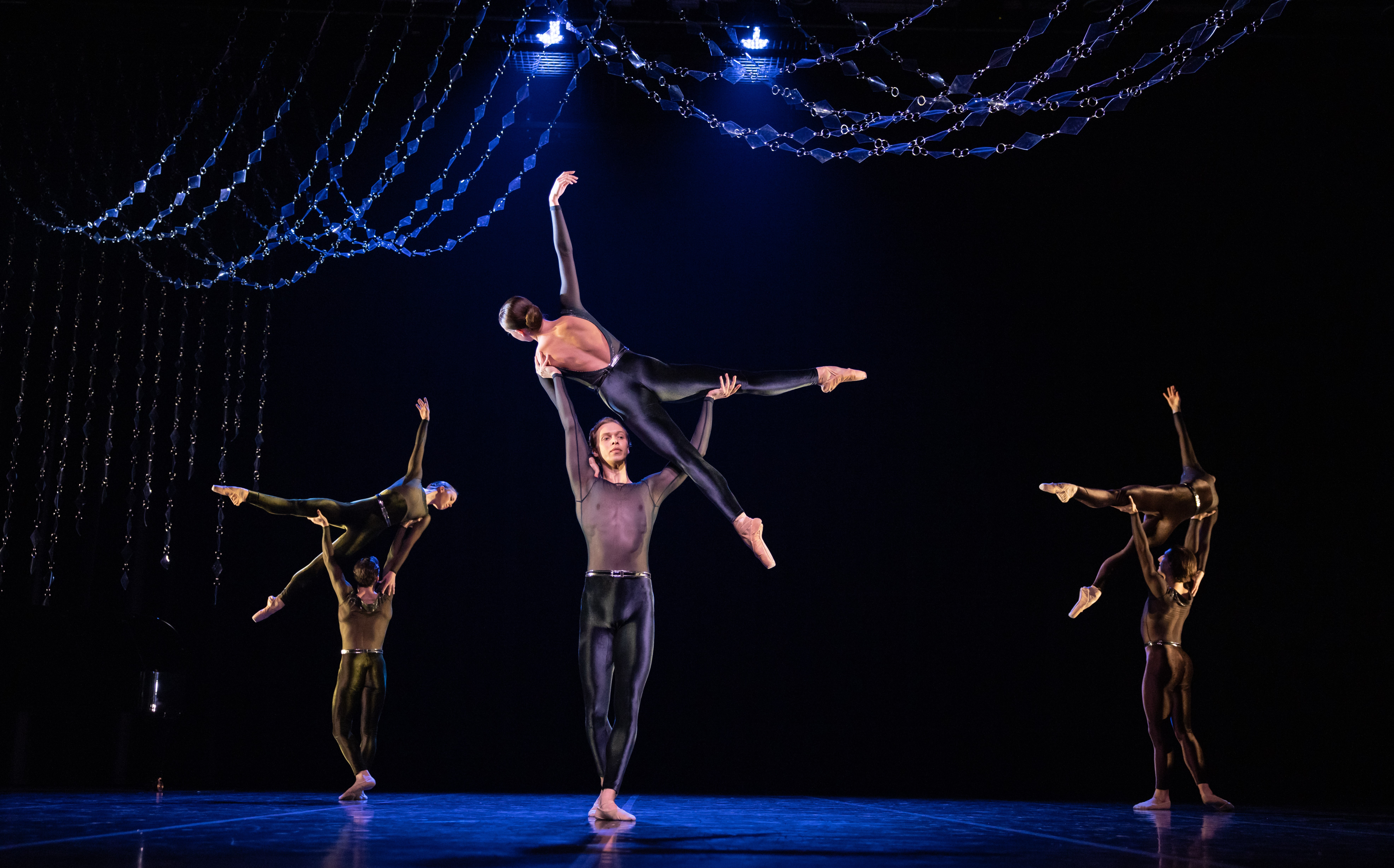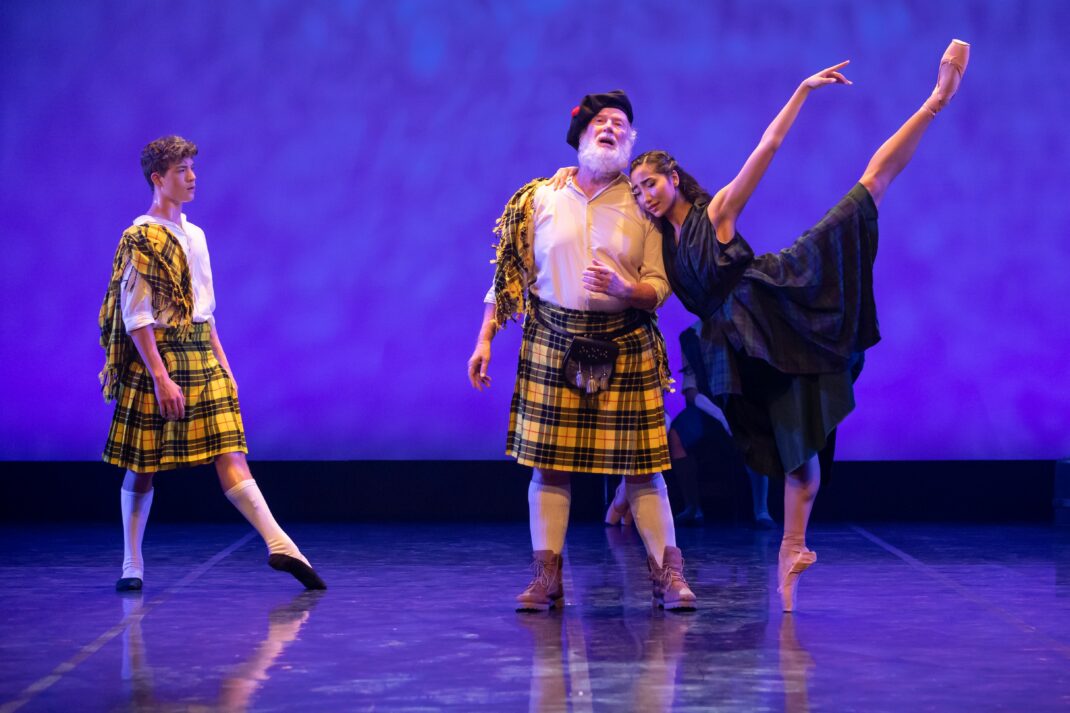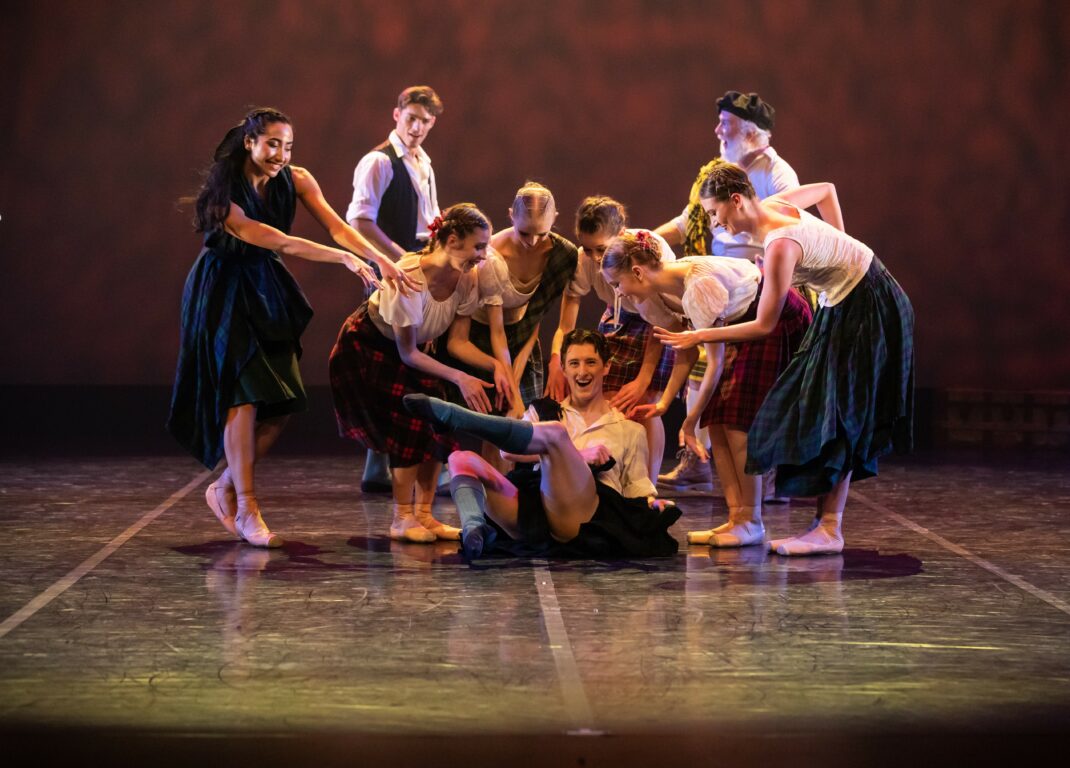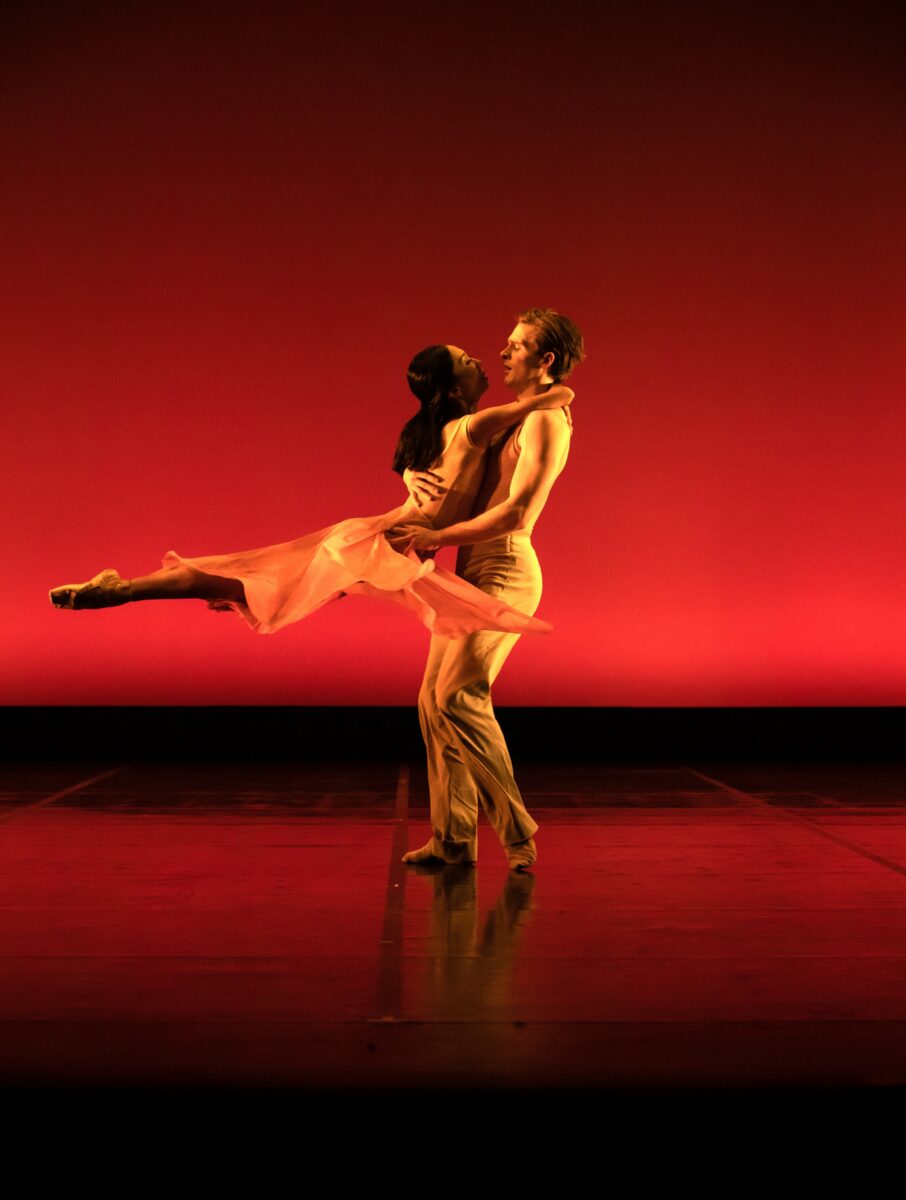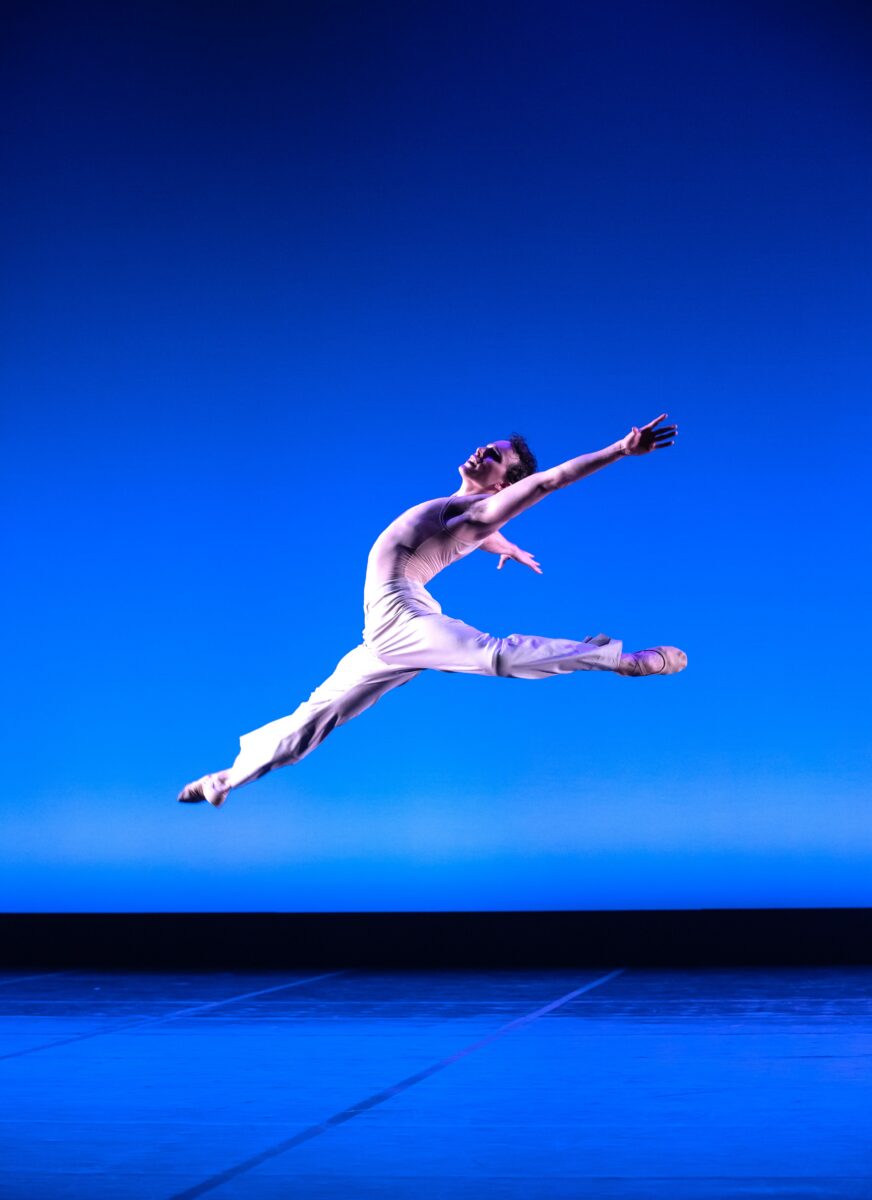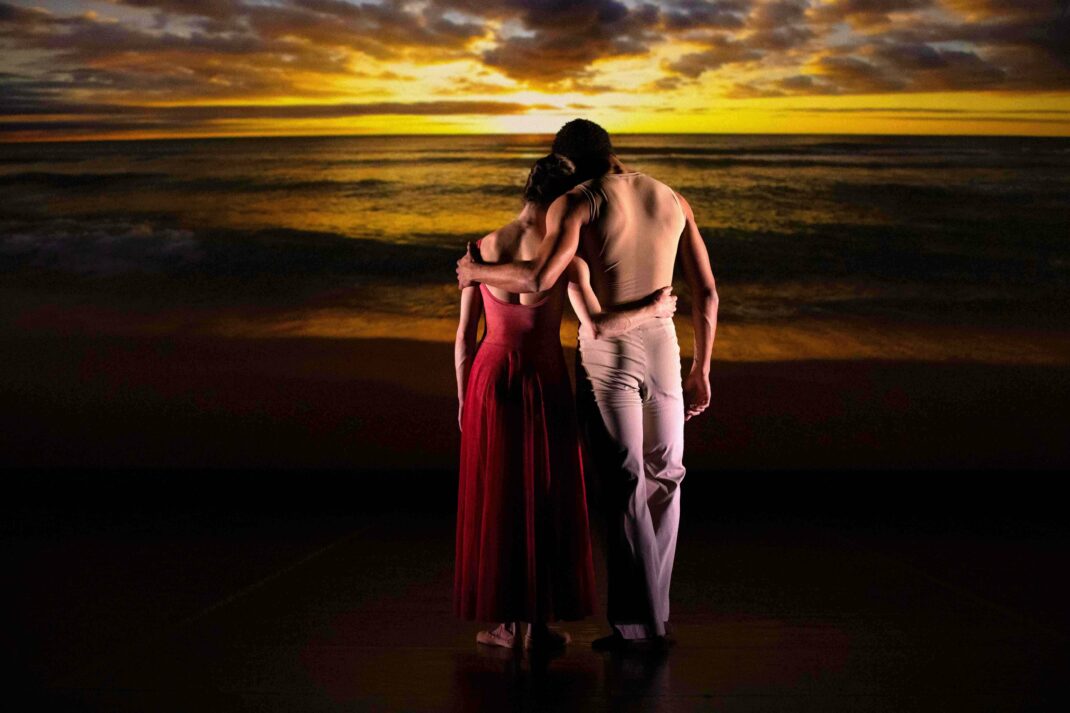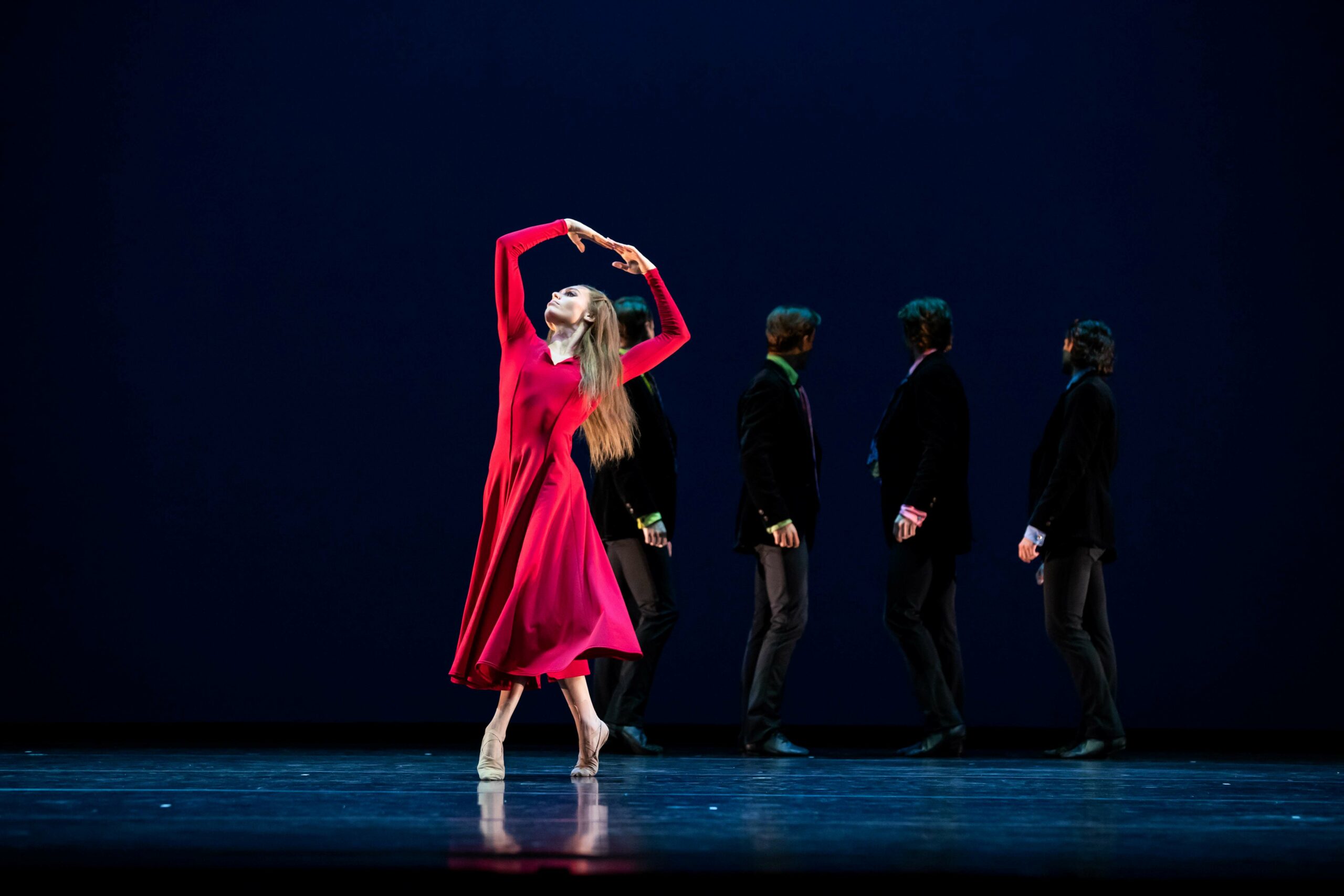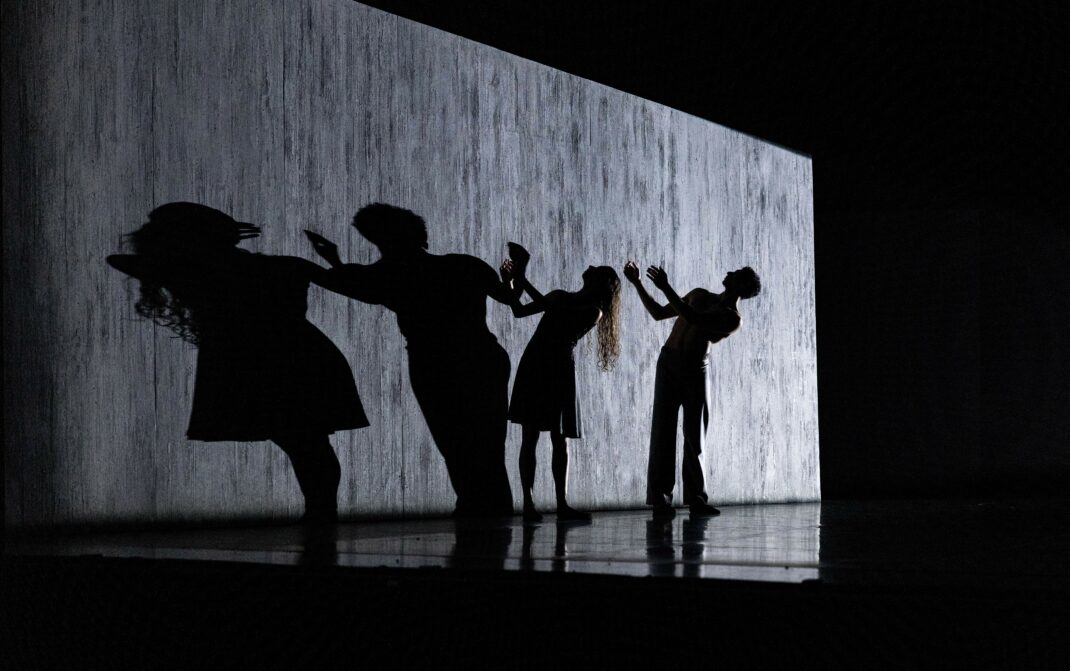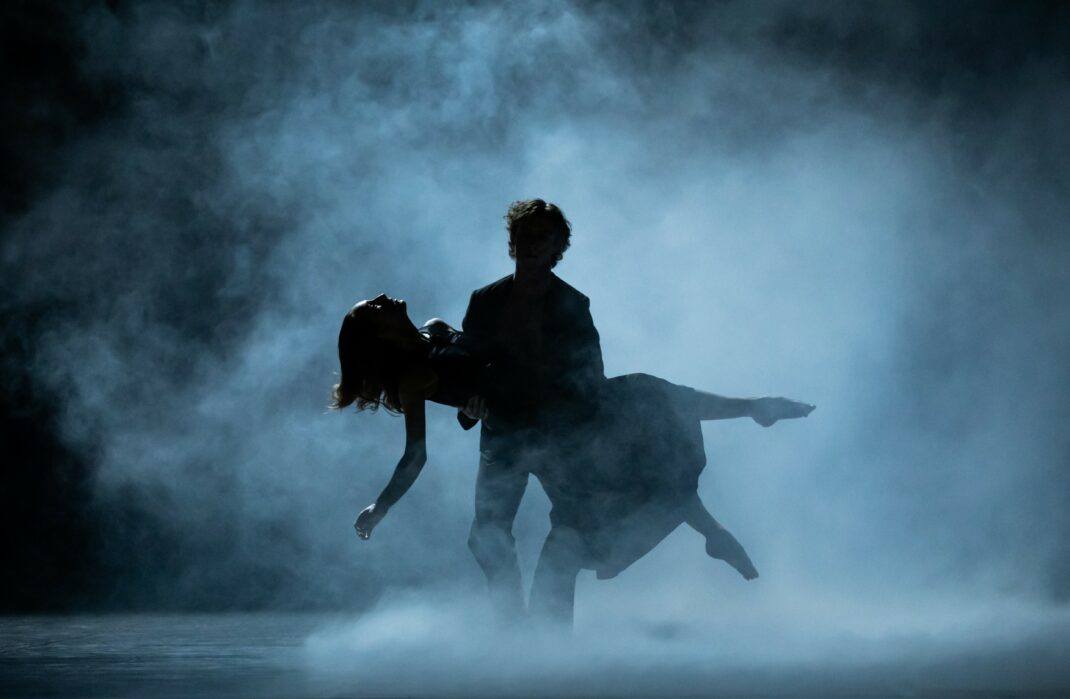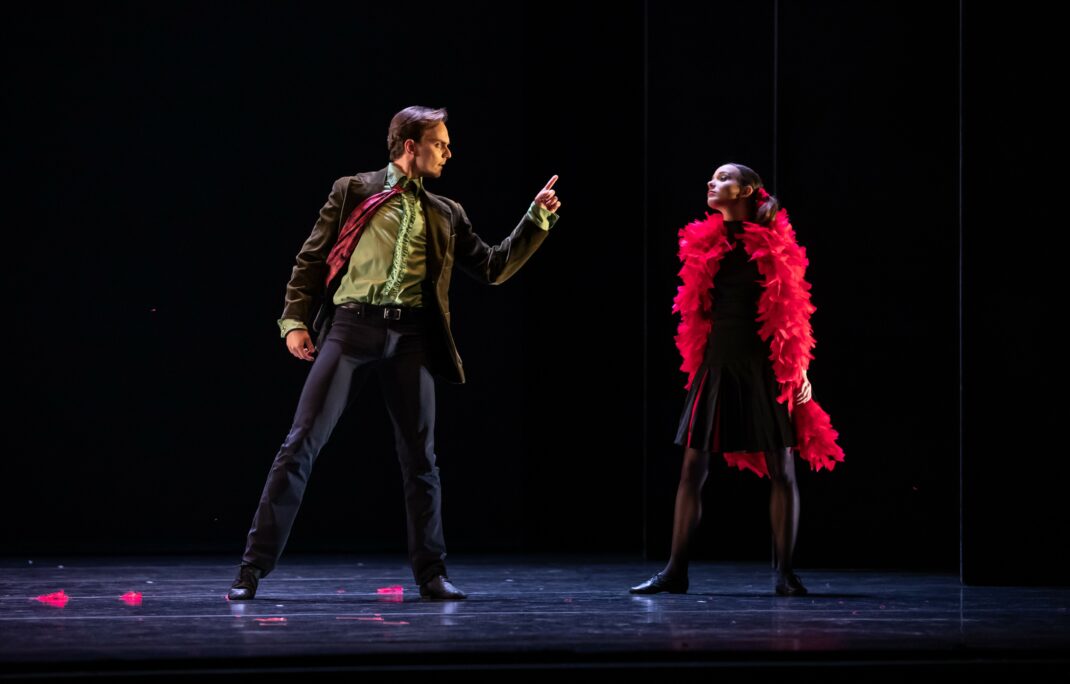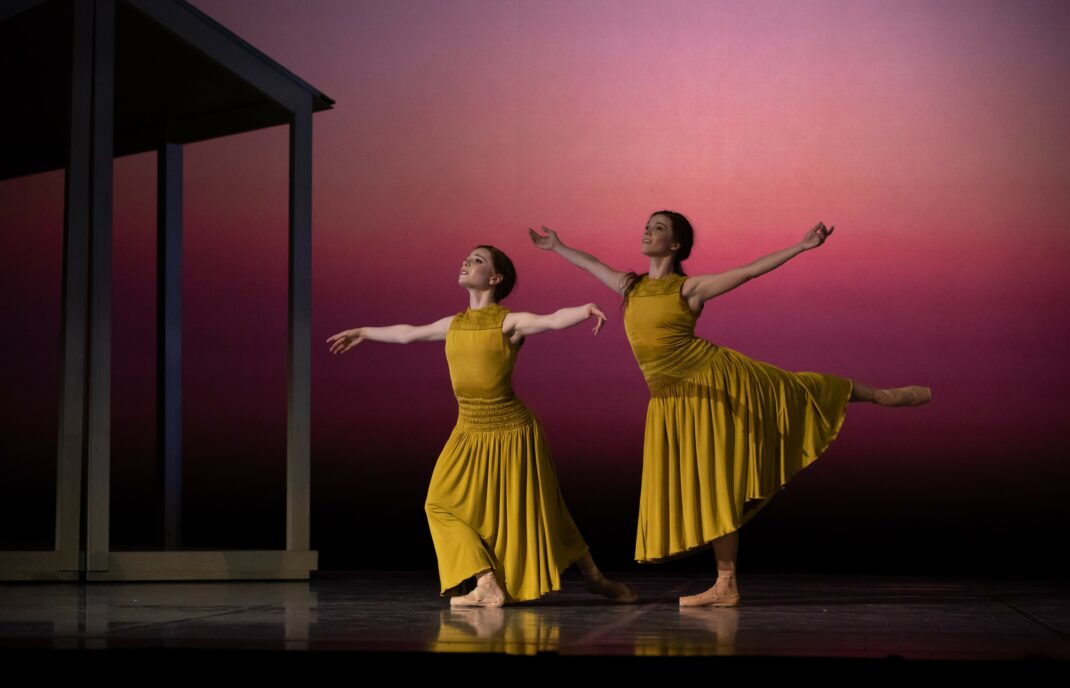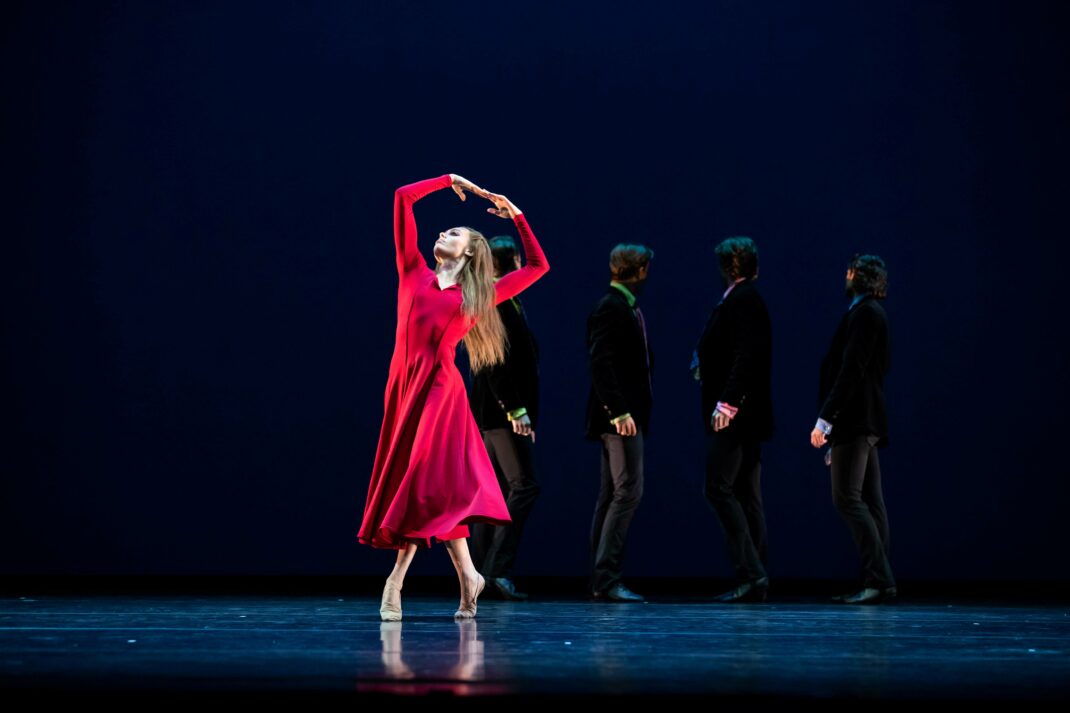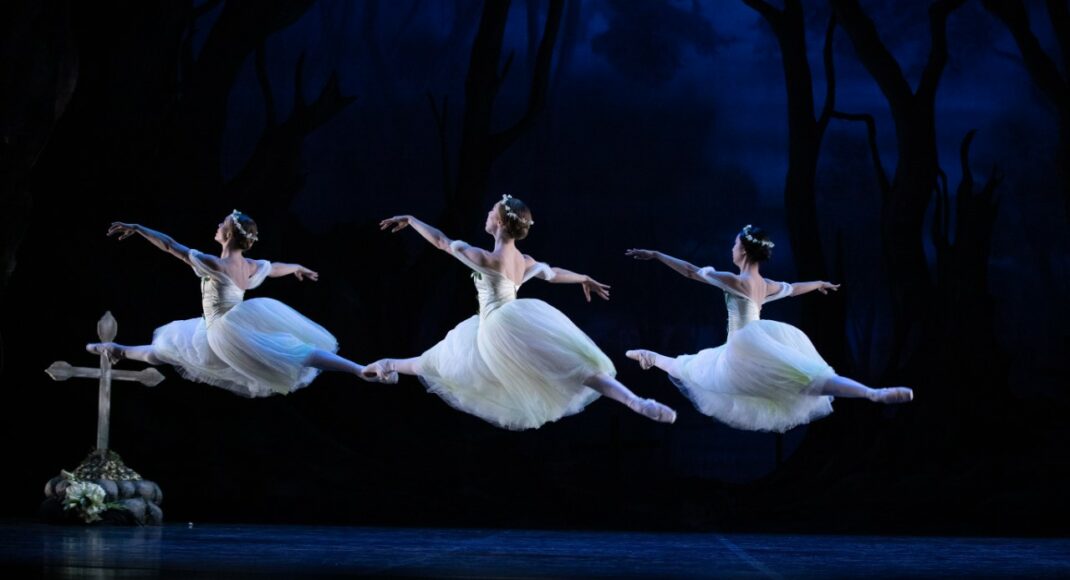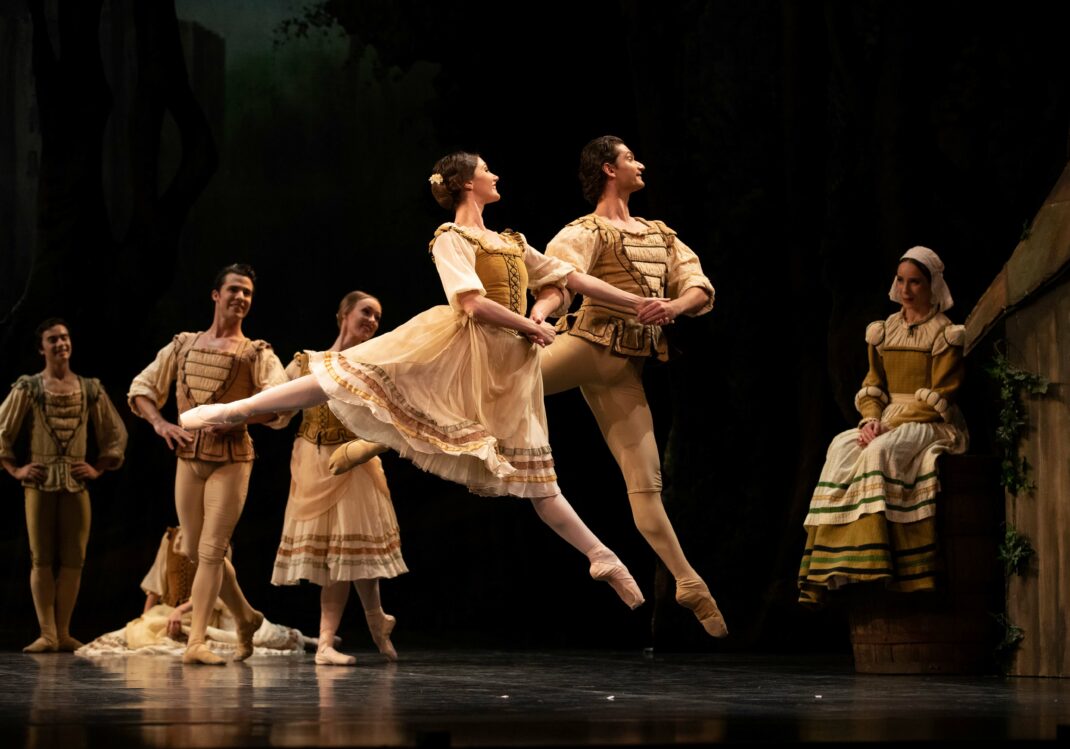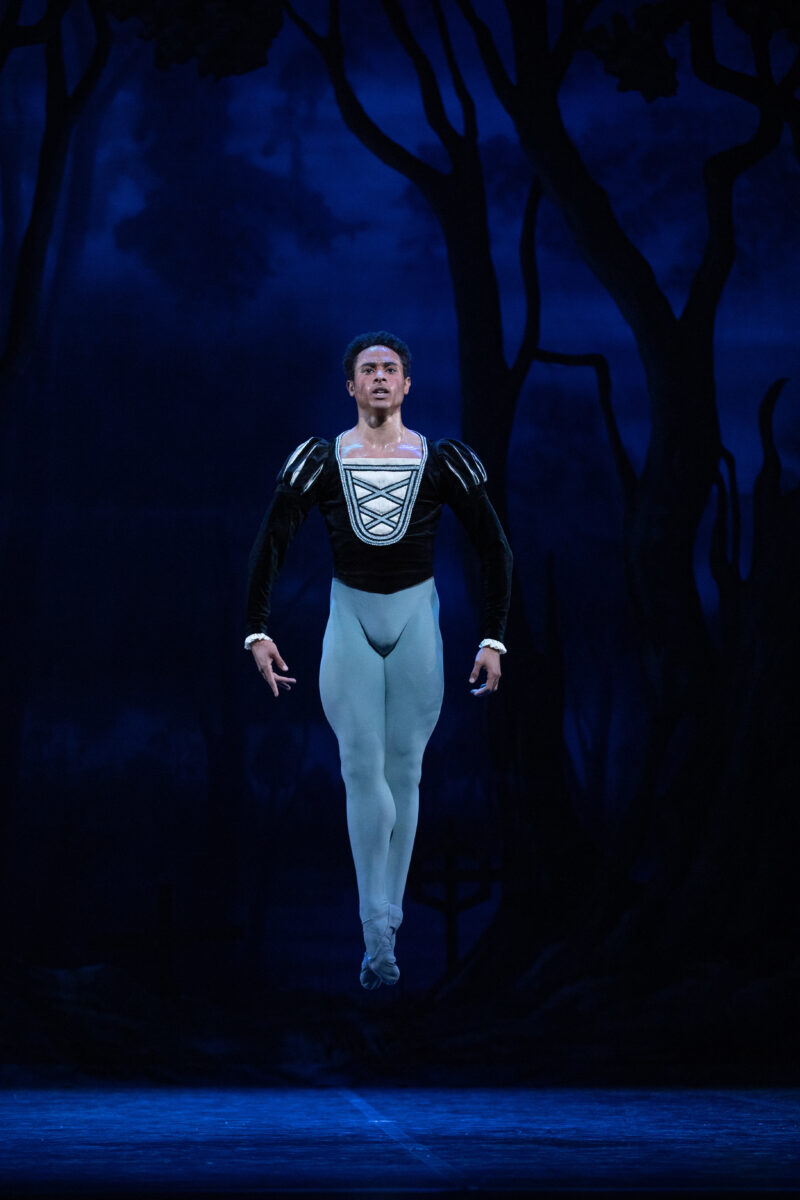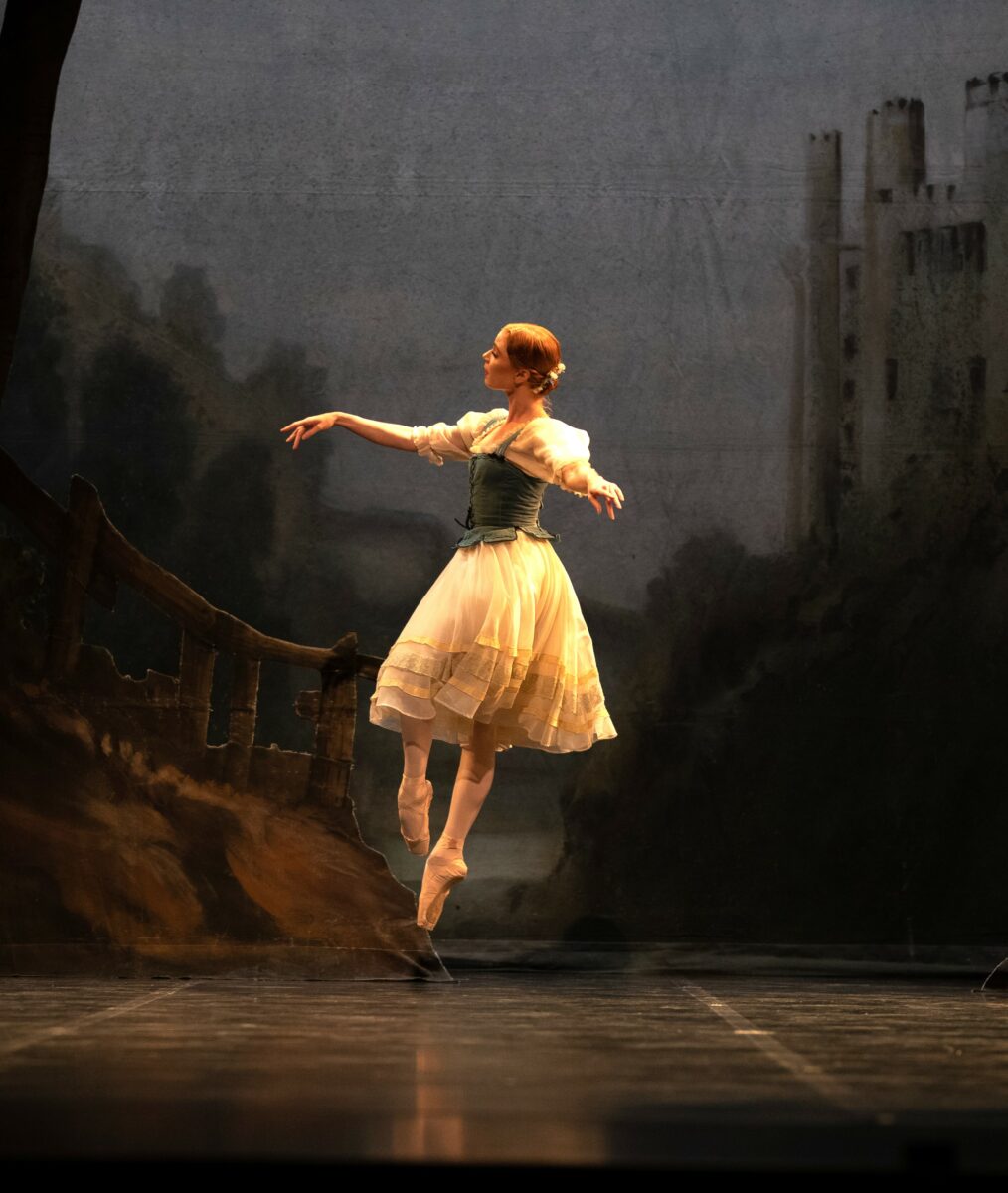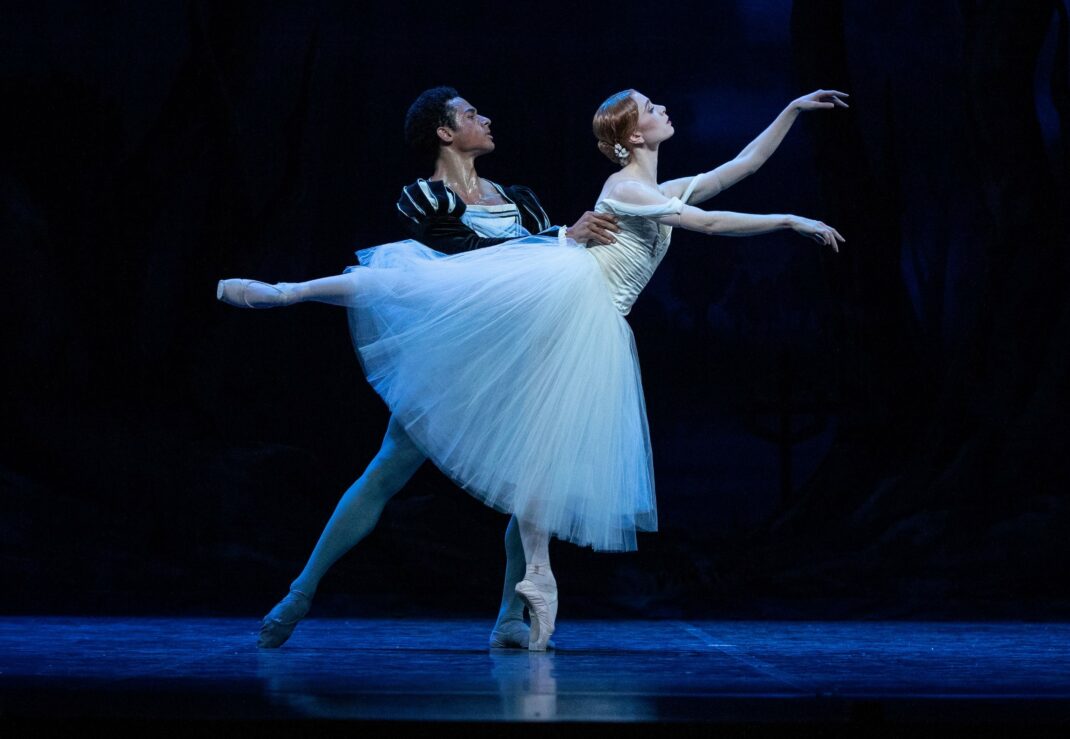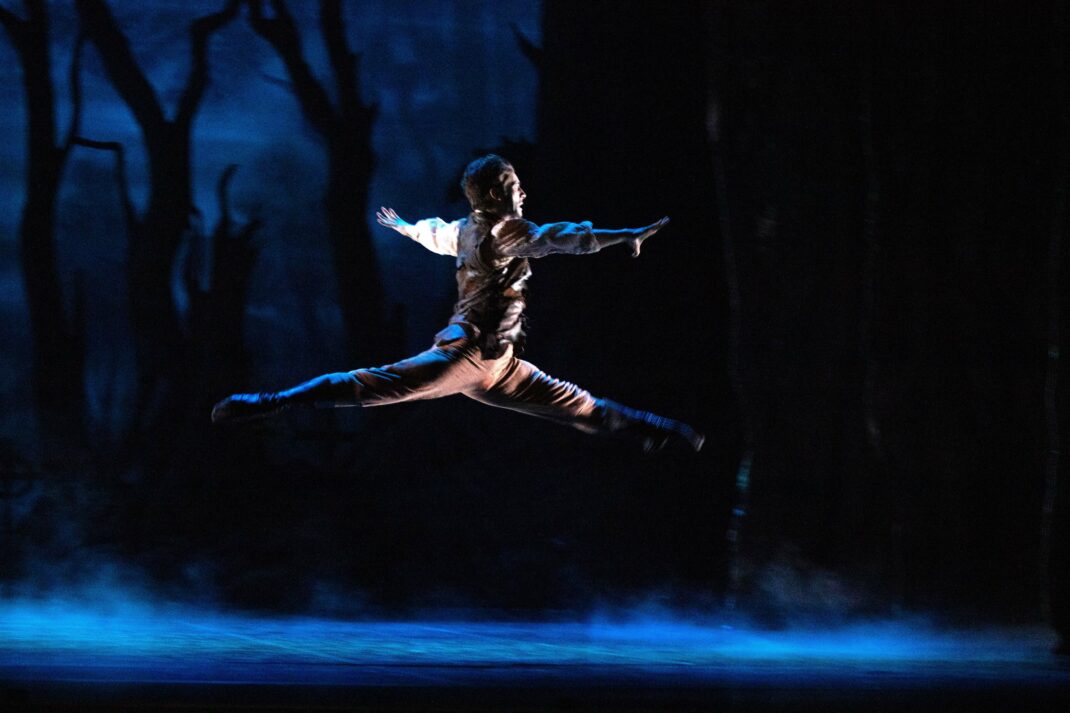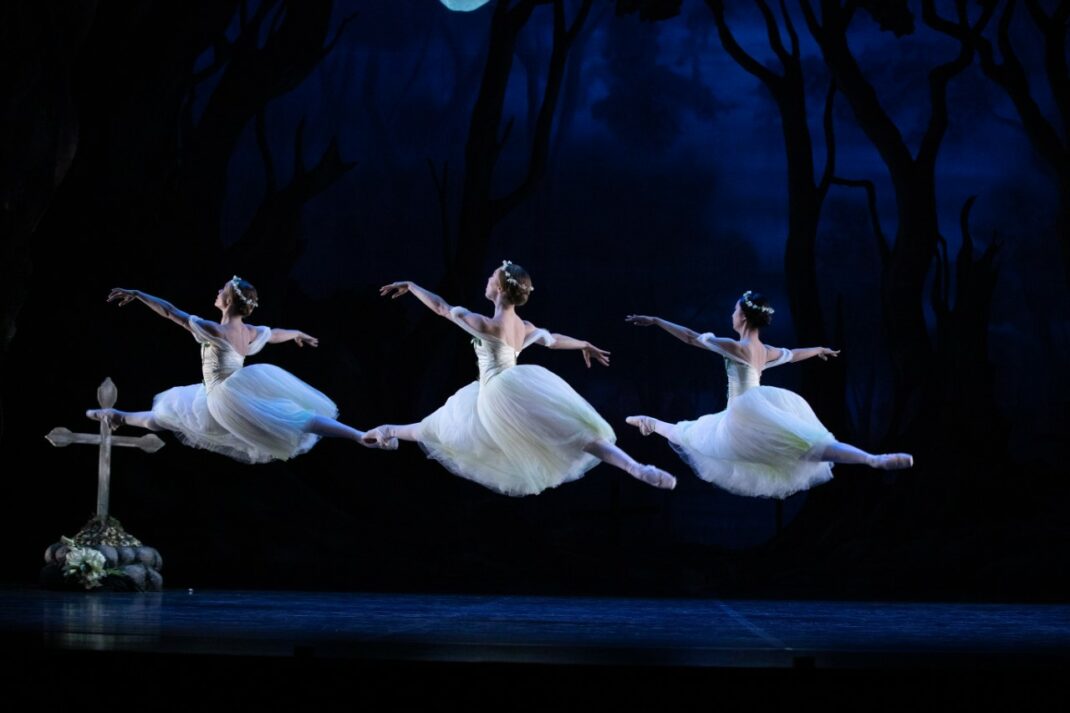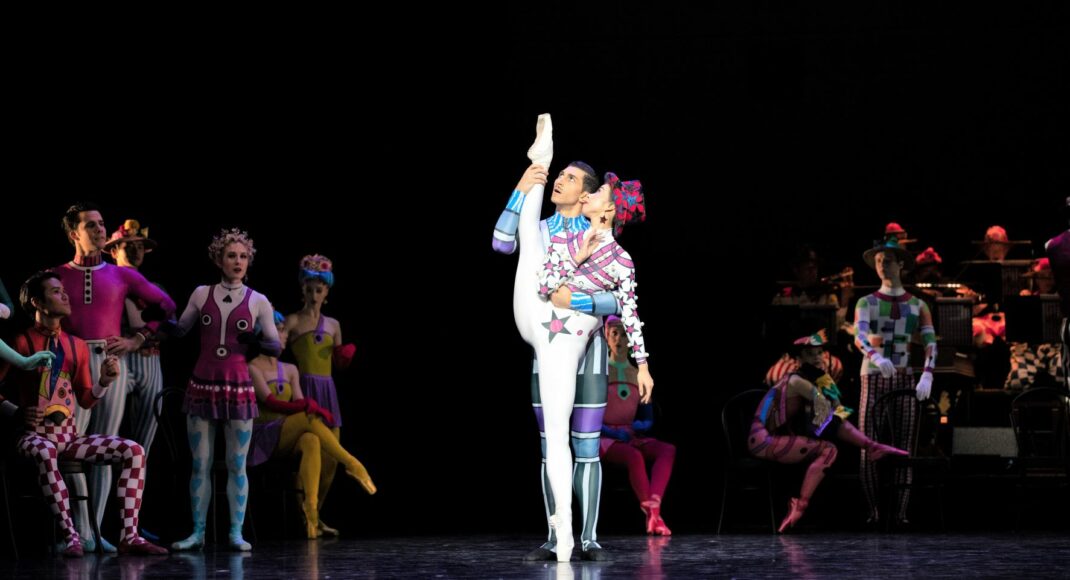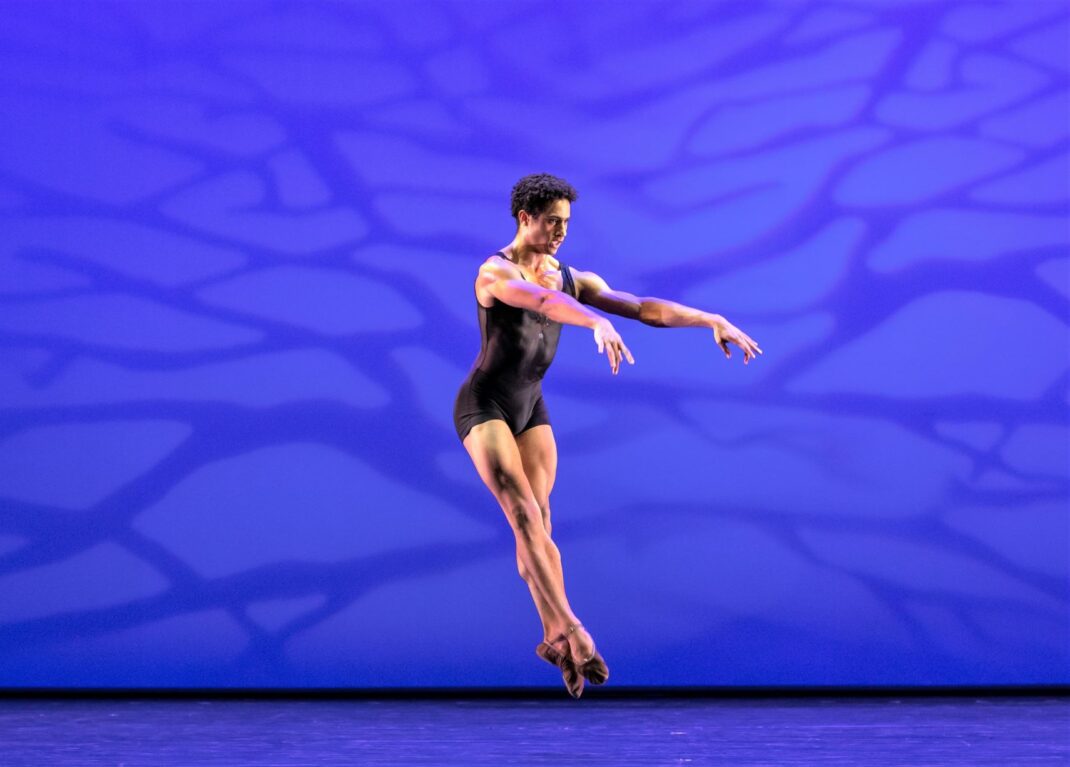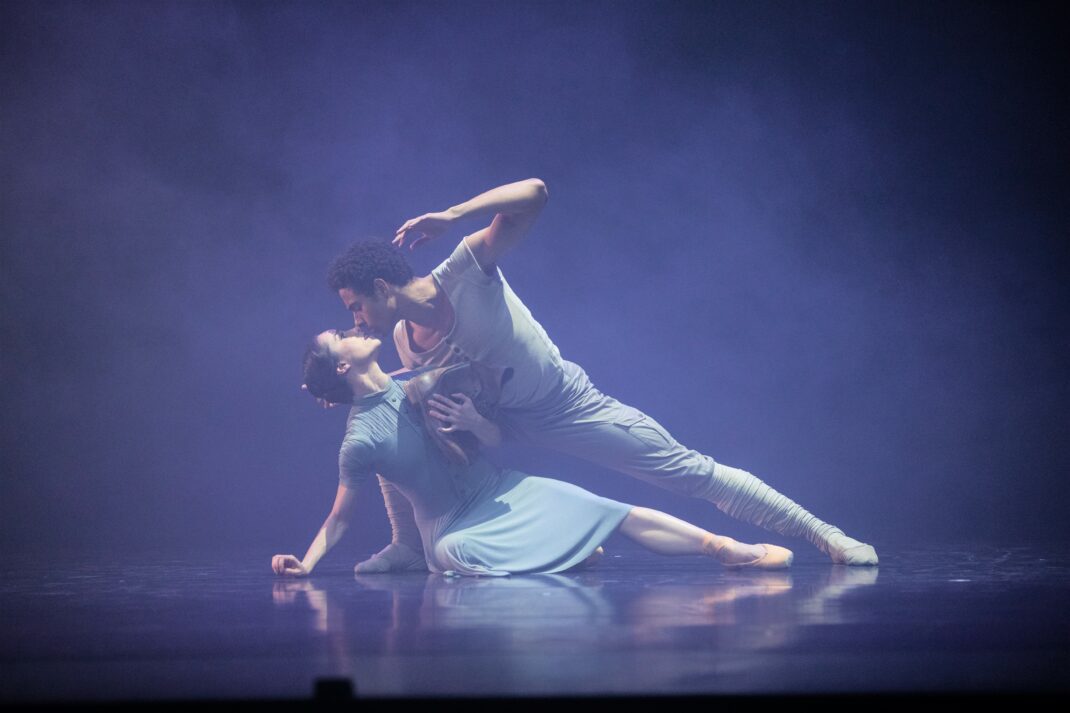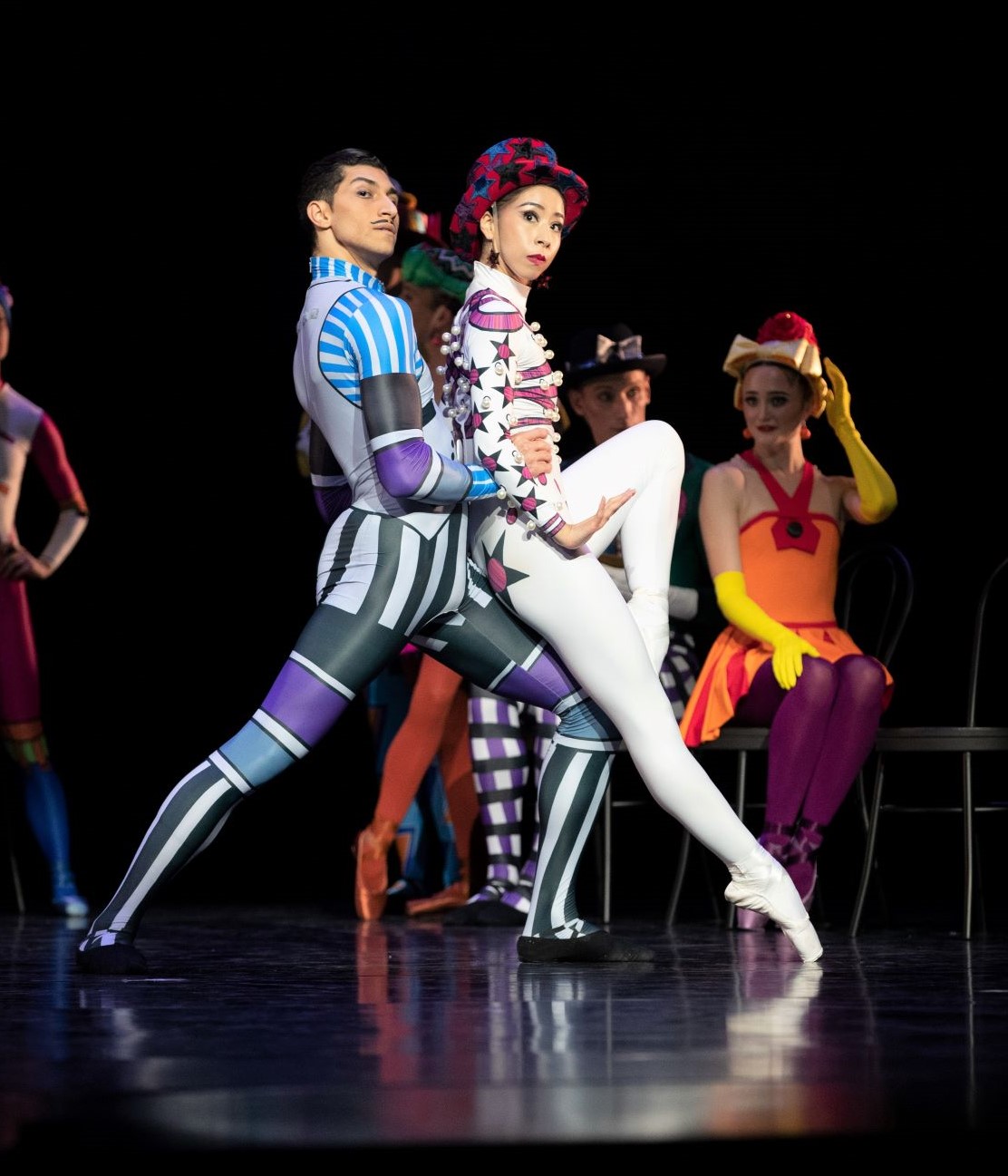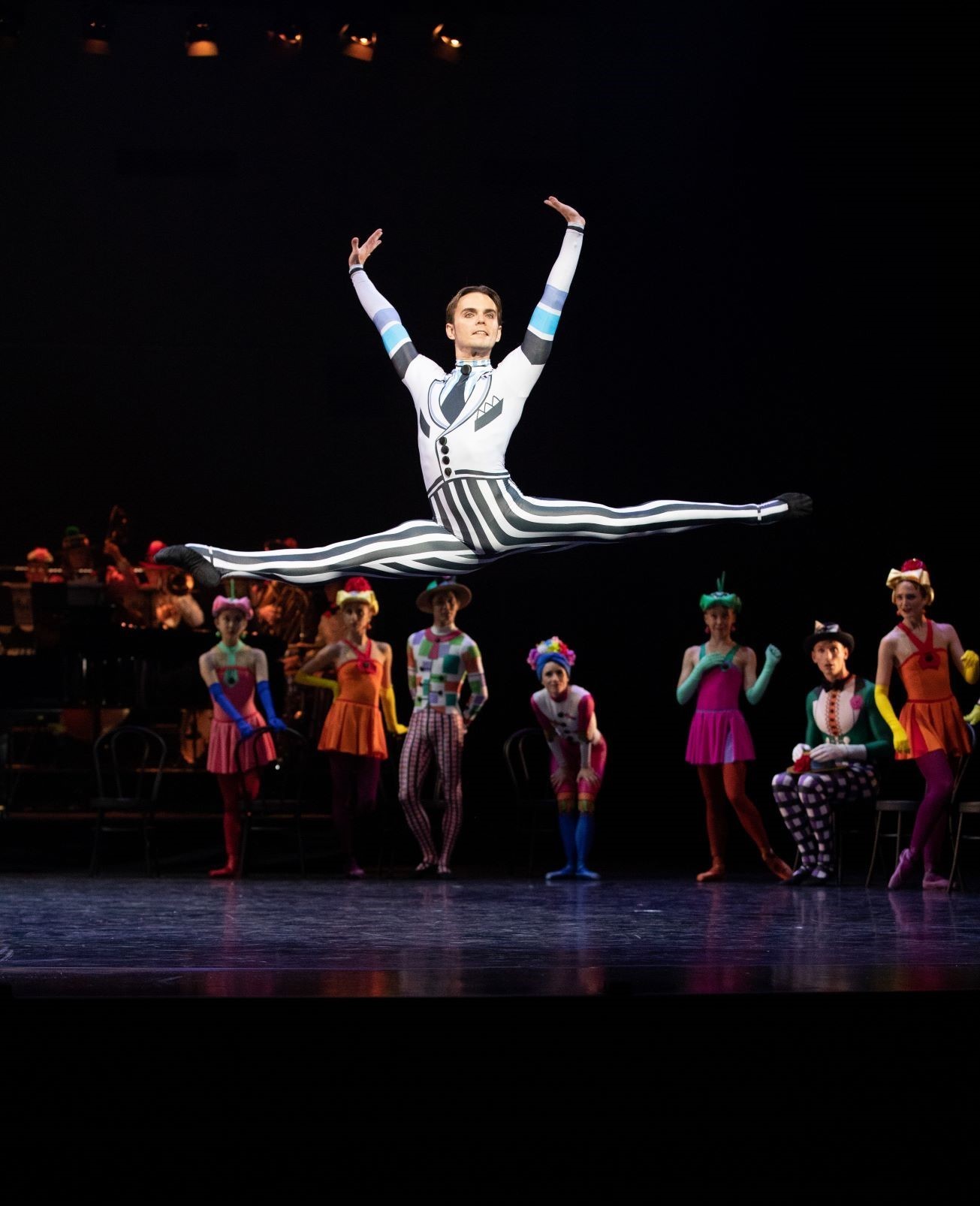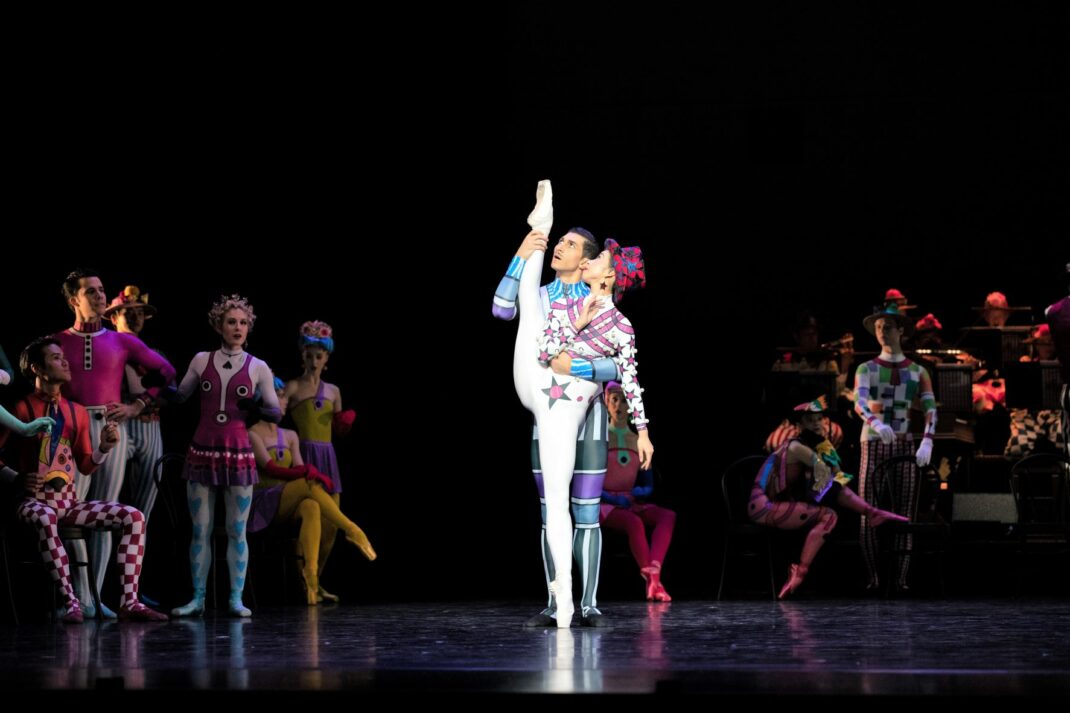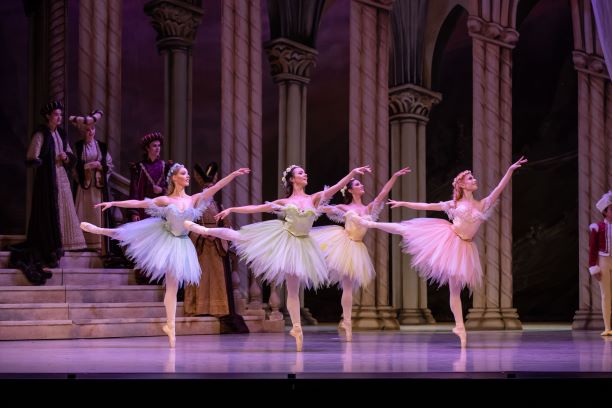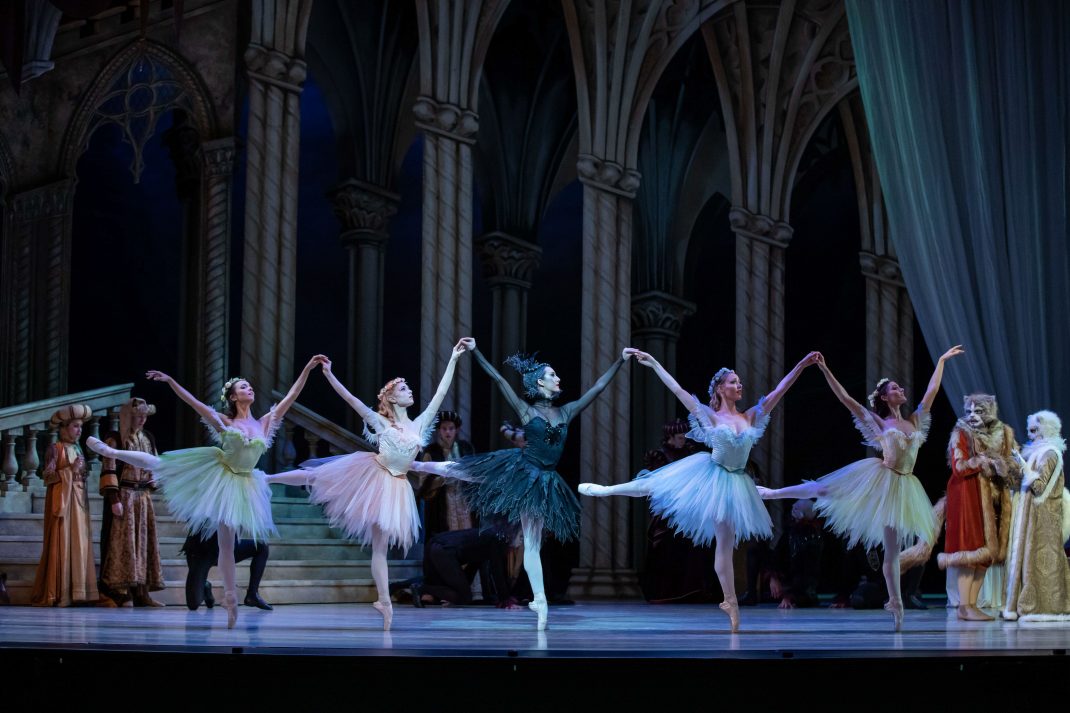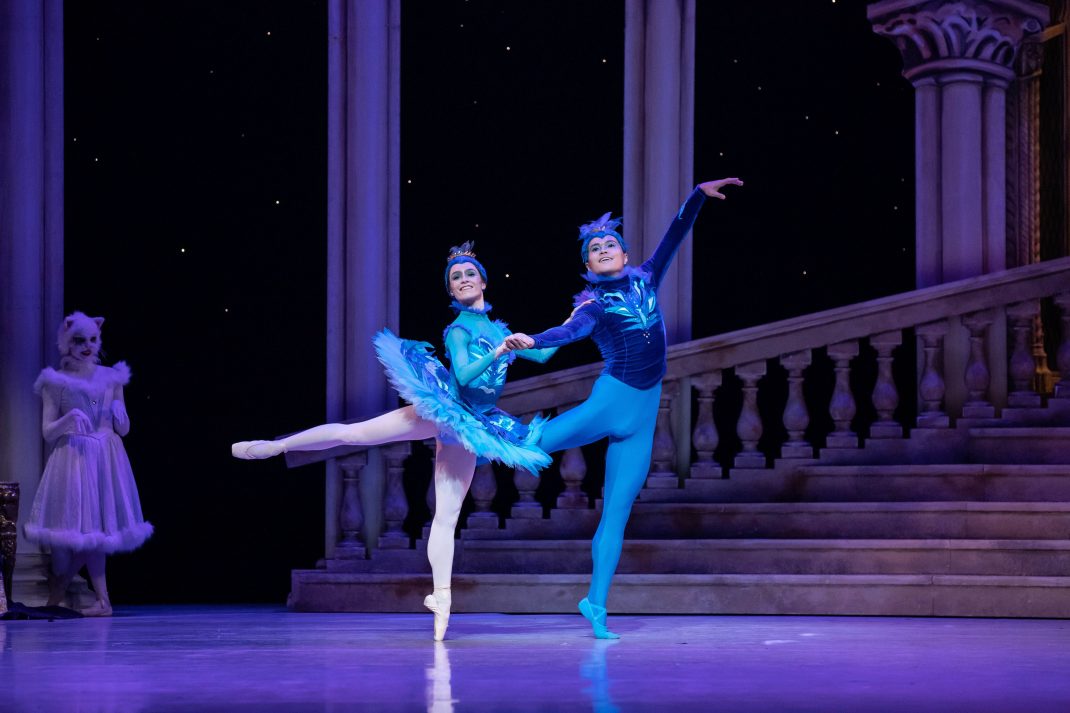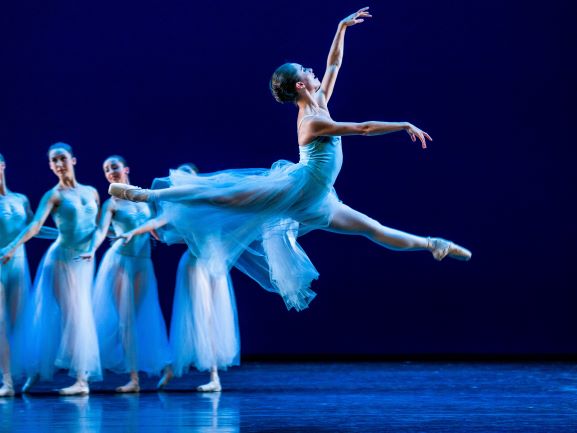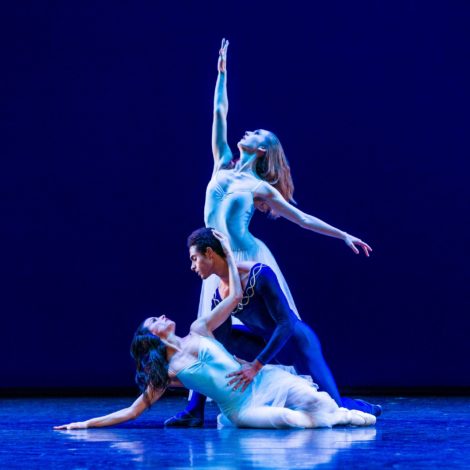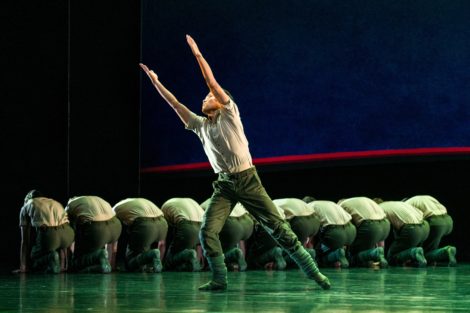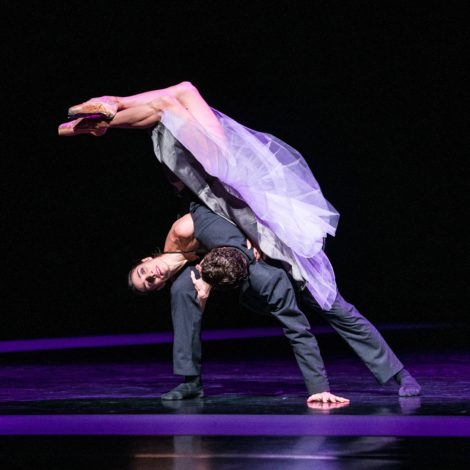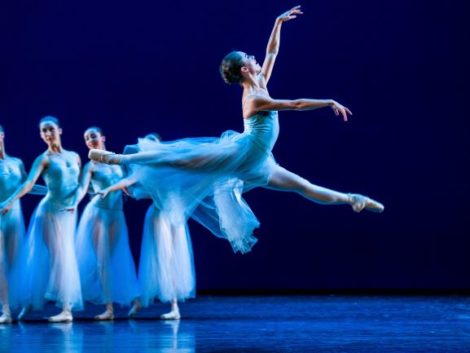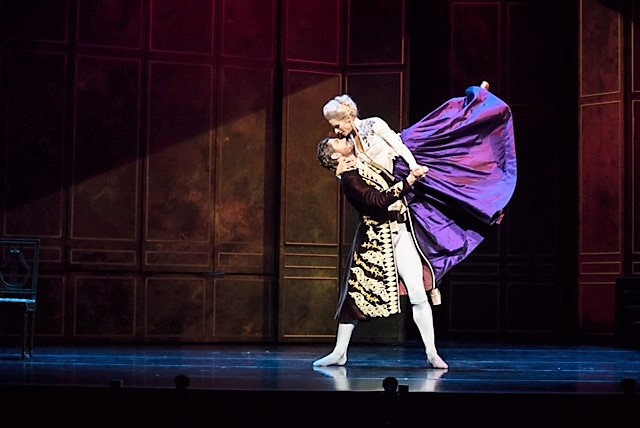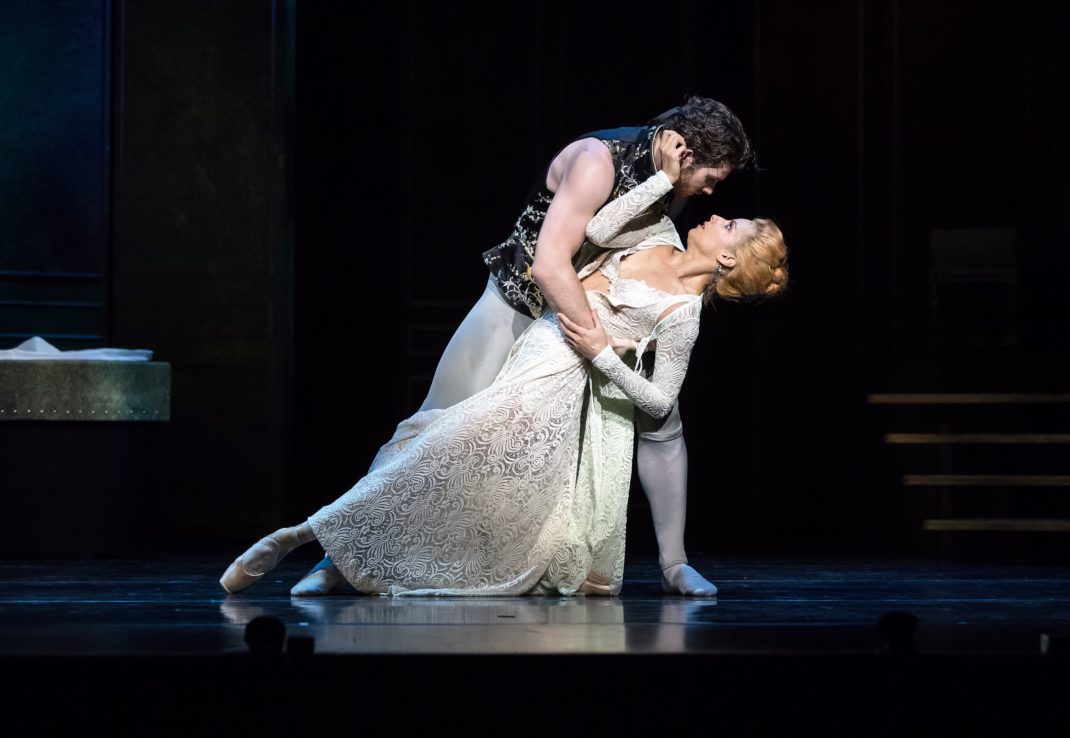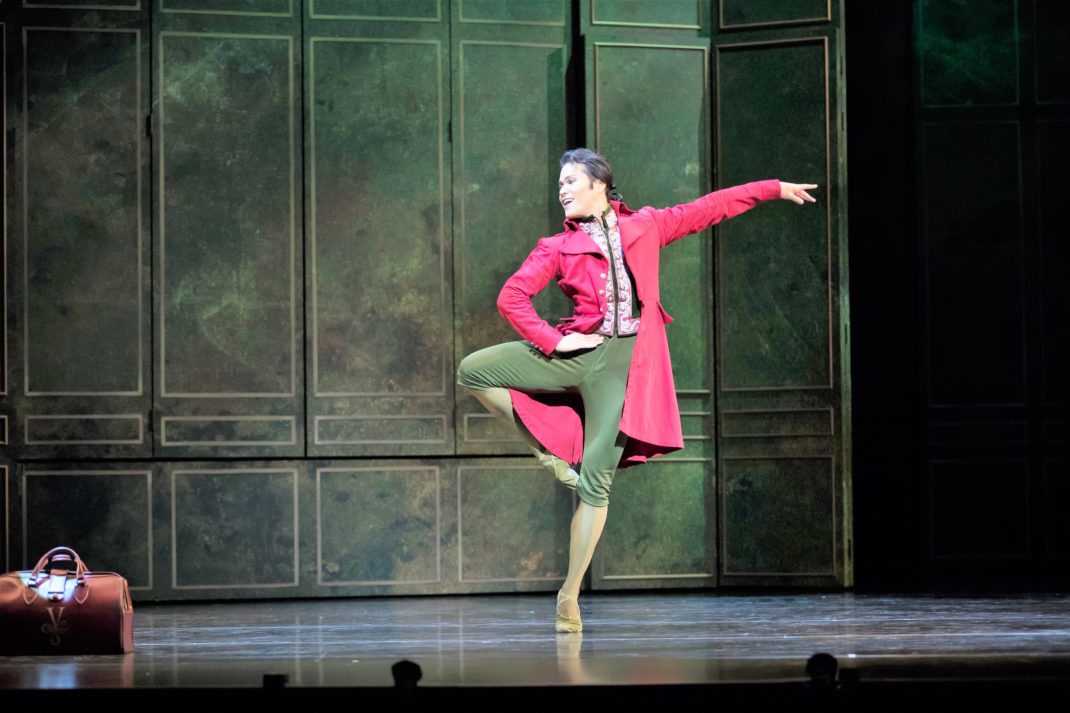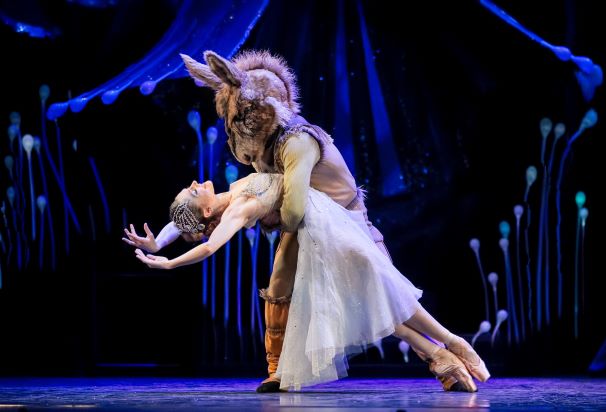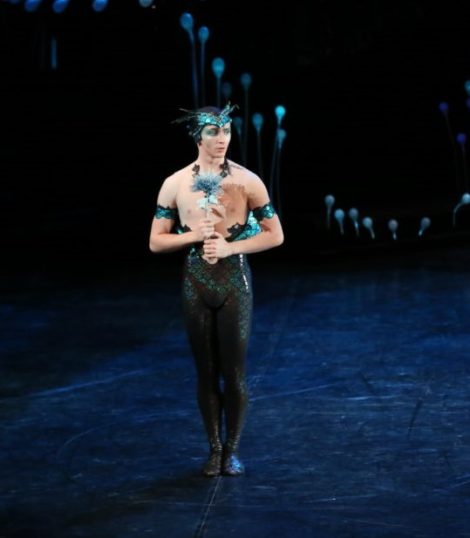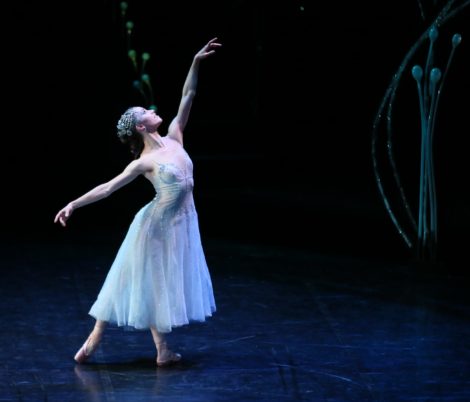12 April 2024. Lyric Theatre, Queensland Performing Arts Centre, Brisbane
This is not the first time I have seen and reviewed Liam Scarlett’s magnificent version of A Midsummer Night’s Dream. And there have also been reviews on this website from Jennifer Shennan given that the work was originally a joint production between Queensland Ballet and Royal New Zealand Ballet. Its world premiere was in New Zealand in Wellington in August 2015 and it was first seen in Australia in Brisbane in April 2016. For me it is a production that benefits from being seen over and over and with new casts. There always seem to be new aspects of the production that I haven’t noticed to the same extent on previous occasions. It is a credit to Scarlett that he embedded so many layers of meaning across the work.
The opening scene, in which fairies set the night time scene for us in a clearing in a forest, is always a treat to observe. The multi-level setting from Tracy Grant Lord, along with her glorious costumes, and the spectacular lighting from Kendall Smith, take us instantly into a different world where we feel unexpected moments may well occur. And they do! In overall approach, Scarlett has kept the Shakespearean storyline of Titania and Oberon and their disagreement over a Changeling child, and kept intact Oberon’s activities to take revenge on Titania. But the storyline has been altered somewhat to add what is perhaps a more humorous aspect to some scenes, or perhaps to modernise some elements.
But those elements aside, Lucy Green as Titania, and Joel Woellner as Oberon were outstanding, both in their characterisation of their roles and in their dancing. Woellner’s first solo, as he pondered how to take his revenge against Titania after she had swept him aside and taken charge of the Changeling, was filled with beautifully fluid movement and fast, perfectly executed turns that allowed Tracy Grant Lord’s Act I costume, with its flowing coat panels, to be an intrinsic part of the action.
There were some brilliant moments too from Green when, thanks to the actions of Puck (Kohei Iwamoto), she had fallen in love with Bottom (Rian Thompson). The physicality of Bottom’s name was played on in a masterly manner.
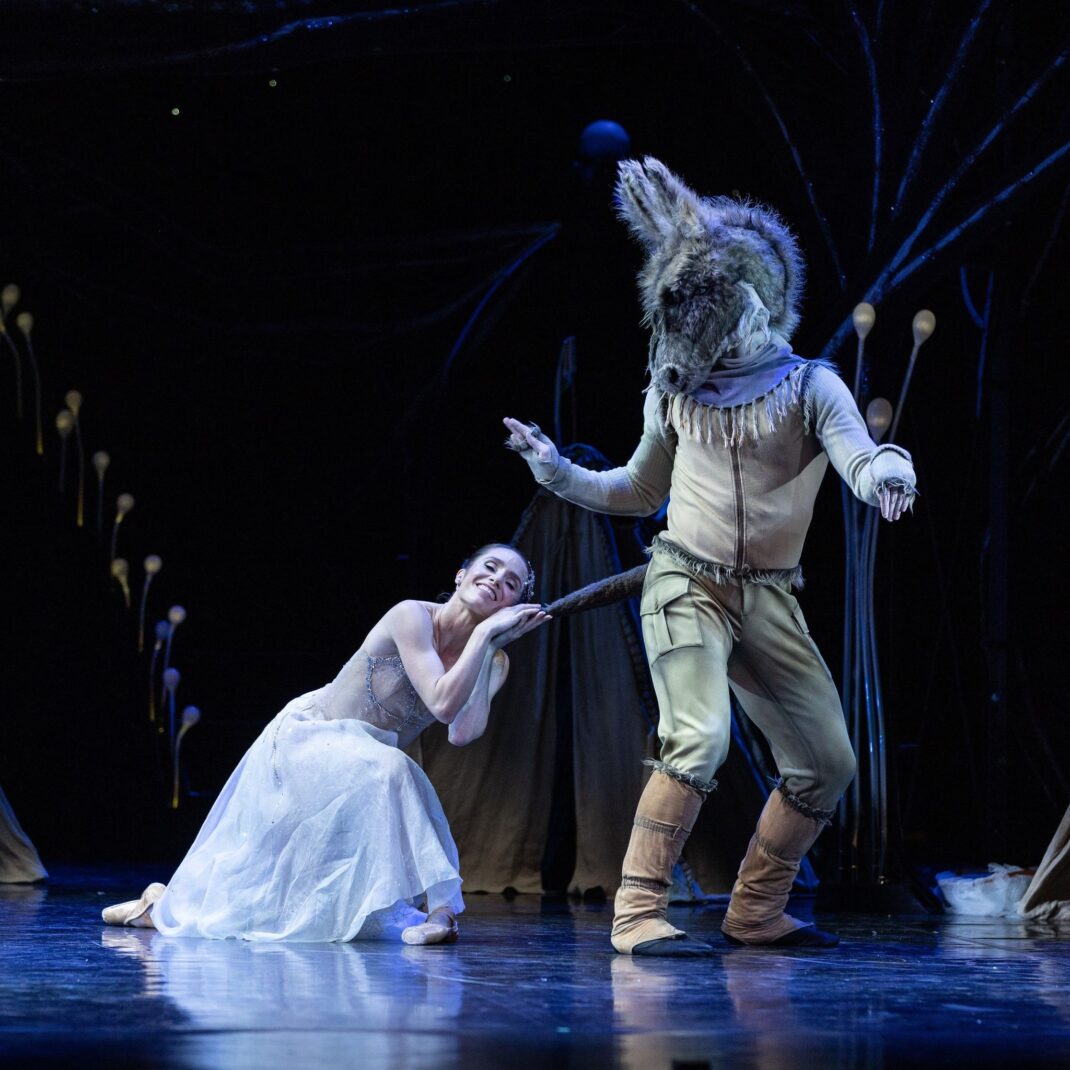
But perhaps the most exceptional work from Woellner and Green came in their last pas de deux when the issues between Titania and Oberon had been resolved. It was truly a choreographic delight to see such beautiful partnering so attuned choreographically to the music (with the usual, very special input from conductor and arranger Nigel Gaynor and Camerata—Queensland’s Chamber Orchestra). Along with the incredible lifts and the pushing of technical boundaries, that pas de deux was gently calming and demonstrative of a resolution to the extent that tears came close to my eyes. It seemed to link up thematically with the charming nature of the fairies in the opening scene.
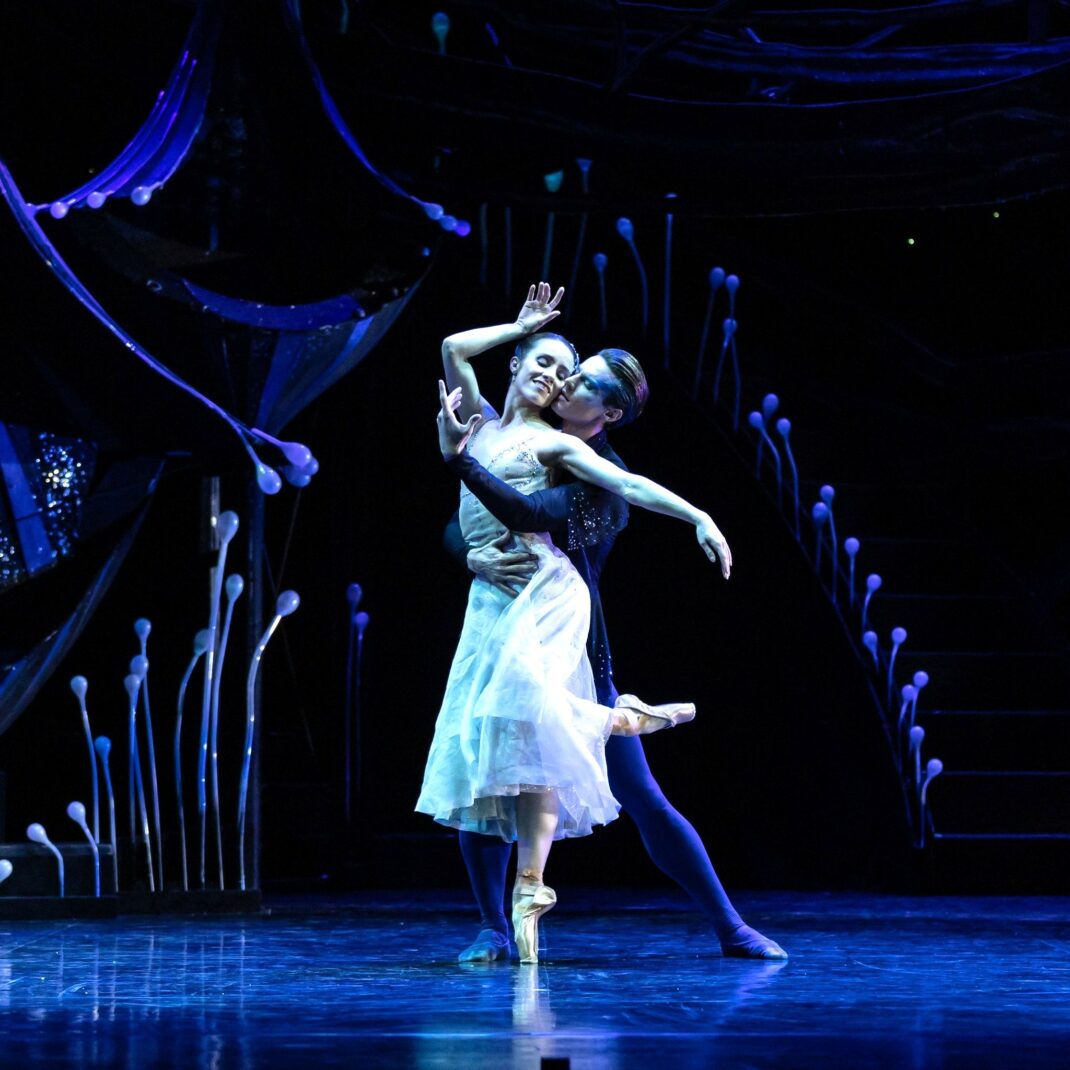
Kohei Iwamoto has been playing Puck since the work’s Wellington premiere but never once does he seem to be replaying anything. His performance on this occasion was as fresh as ever and one can’t help but be stunned by his great elevation and awareness of moving through space, as well as the way he plays up to the audience at times while always remaining aware of his place in the storyline.
The Rustics, with their very down-to-earth choreography and their absolute enjoyment of what they were doing, and the four Explorers (and lovers) all held their own. I was especially taken by a pas de deux performed by Hermia (Chiara Gonzalez) and Lysander (Alexander Idaszak), which, apart from being danced beautifully, was like the final pas de deux between Titania and Lysander—perfectly in harmony with the music.
There were just a couple of disappointments for me. One was that the Changeling, such a beautiful addition to the work, seemed not to have been coached to the same extent, or in the same manner, as on previous occasions. I was blown away the first time I saw this Dream with the way in which the Changeling was such an endearing character with such obvious human characteristics. This time he seemed a somewhat static addition, an afterthought even, and perhaps it was not so much to do with the dancer but with the interpretation that had been suggested he take on. A changeling, it seems, can have a number of characteristics, but the approach I saw that first time was such a delight and added such a recognisably human element to the story, which I’m sure Scarlett would have loved.
The other disappointment came with the final pas de deux between Oberon and Titania. In my first viewing of this production I loved the sexiness that was part of the reconciliation. I wrote, ‘…. there was a gorgeous moment in the pas de deux of reconciliation between Oberon and Titania where he ran his hand along her extended leg and she followed that movement with a little shake of the lower part of the leg. A frisson of excitement.’ The ‘frisson’ was missing this time!
But disappointments aside, Liam Scarlett’s A Midsummer Night’s Dream is a sensational work that never ceases to bring joy, surprise and admiration at every viewing. Queensland Ballet always shows its standout qualities.
Michelle Potter, 14 April 2024
Read my review of the first Australian performance at this link and listen below to Jennifer Shennan’s review of the world premiere, as recorded by Radio NZ.
Featured image (cropped): Three Fairies with the Changeling in the bottom right-hand corner. A Midsummer Night’s Dream, Queensland Ballet, 2024
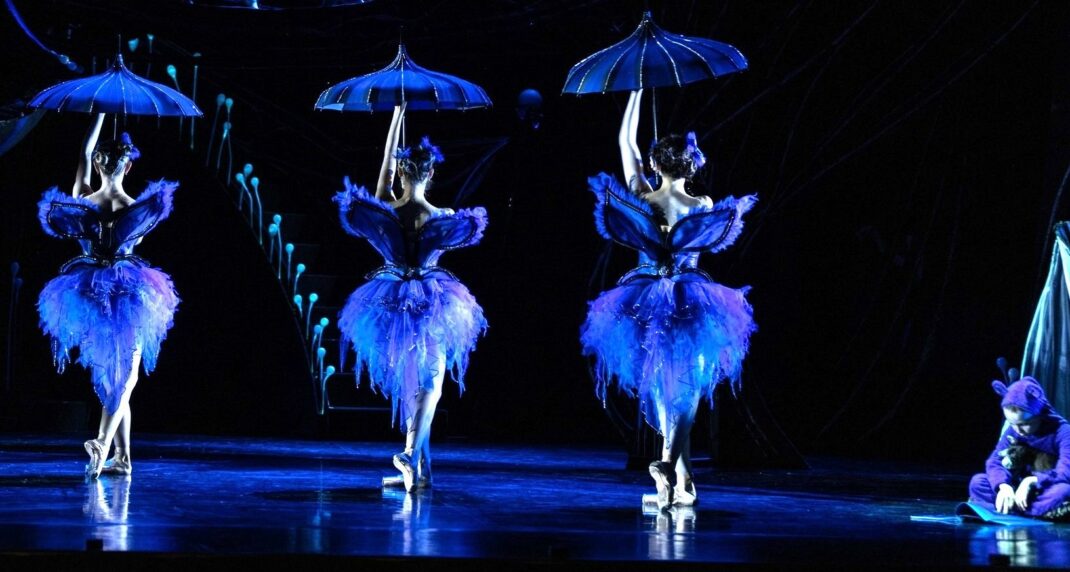
All photos: © David Kelly. Found on Queensland Ballet’s Facebook page and uploaded by Kelly.
